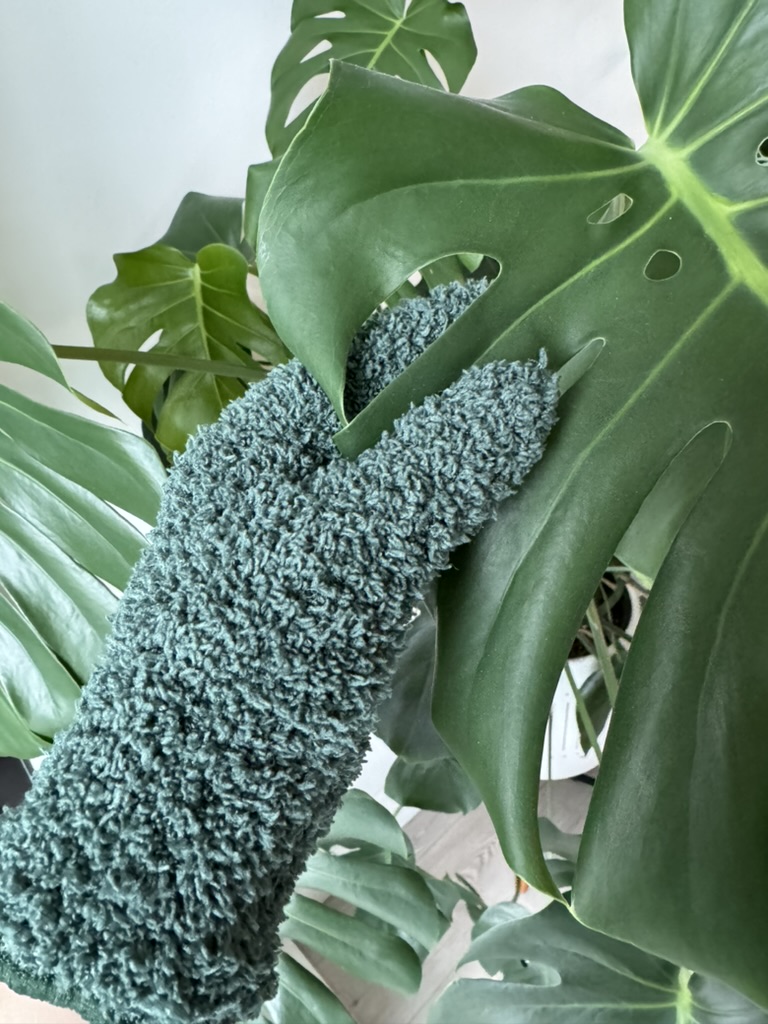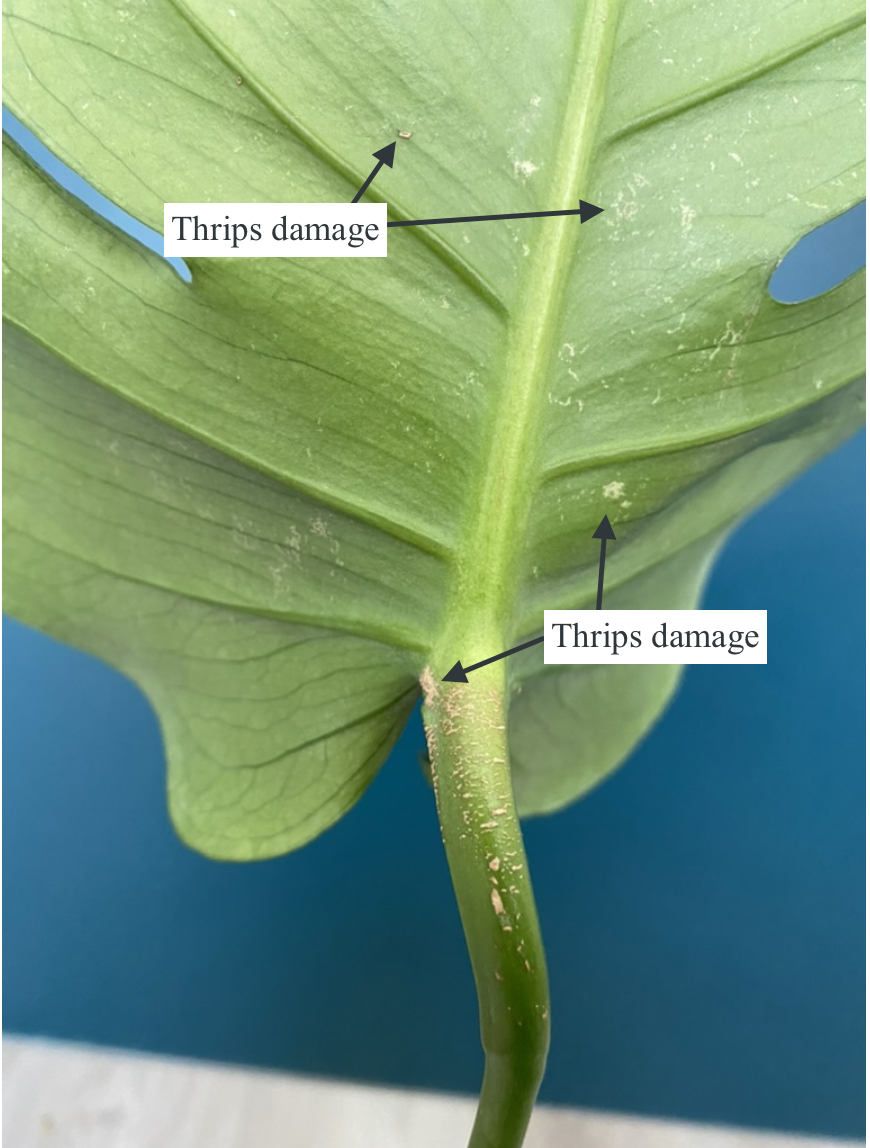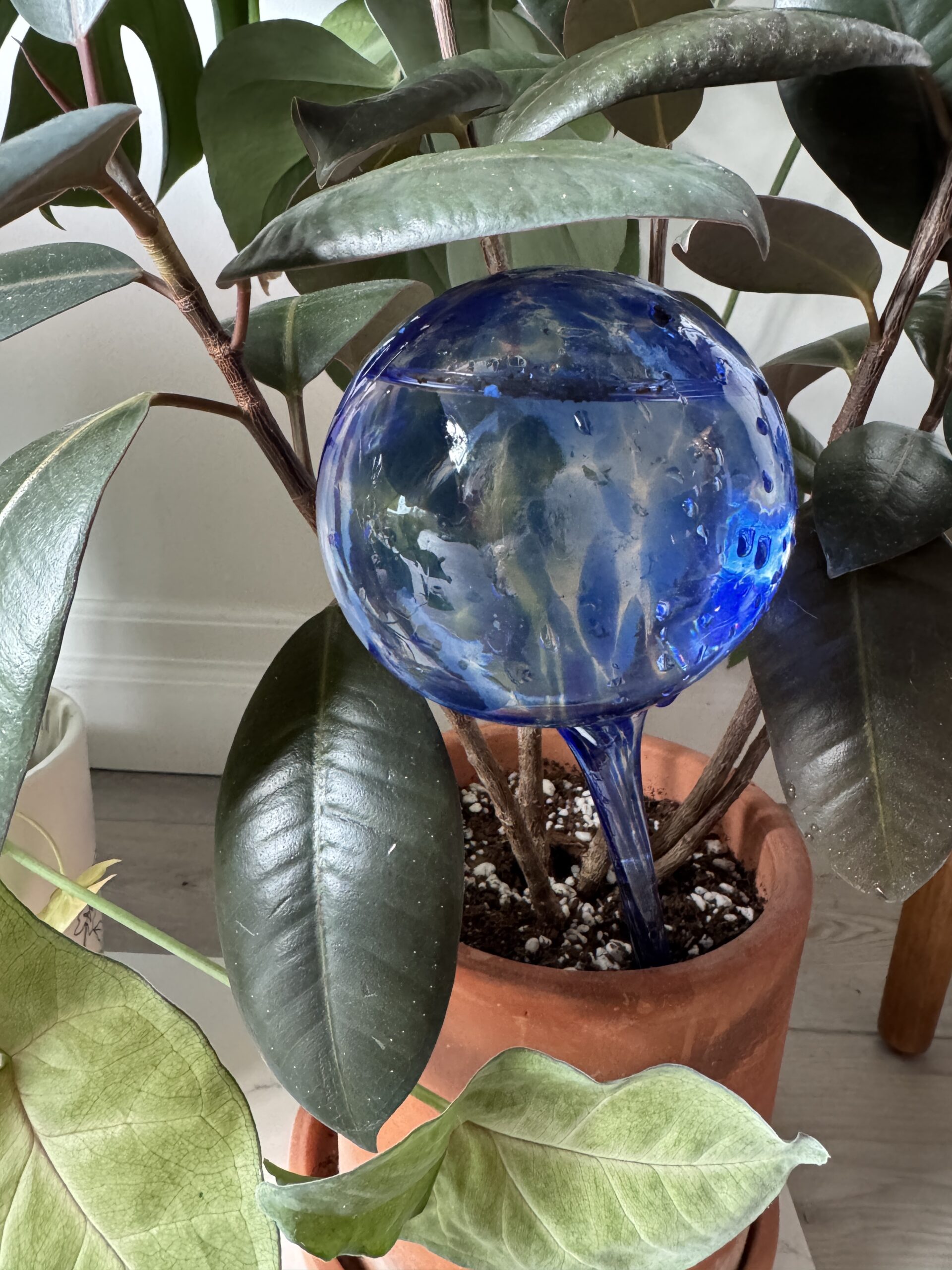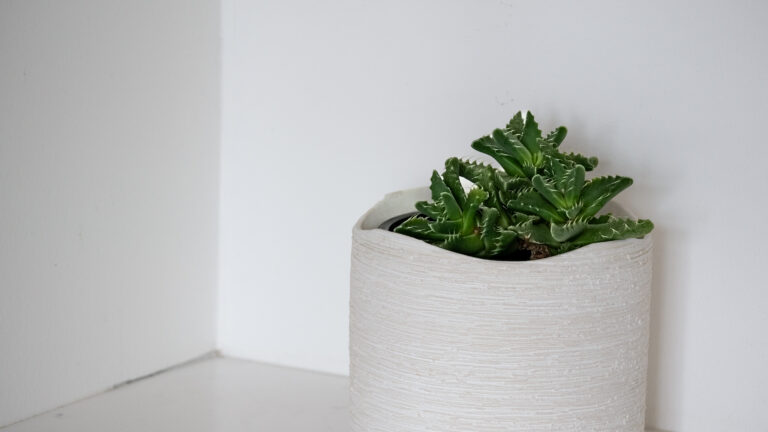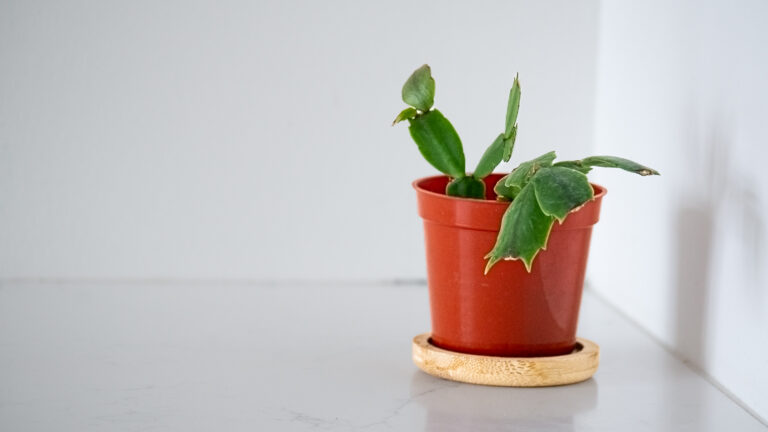Coleus are typically grown in the outdoors, but this is my Coleus indoor plant care guide.
The Coleus or Coleus scutellarioides specifically, are a member of the Lamiaceae family. It is native to Southeast Asia through to Australia. This plant is also nicknamed Painted Nettle.
Coleus is a relatively new genus. It was first described by the botanist Carl von Linné (Linnaeus) in 1763. However, Carl Von Linné is considered the father of taxonomy. He established the universally accepted naming of living organisms. Carl aside, let’s get into the appearance of Coleus.
🪴 Appearance
Many coleus have been bred to have variegated leaves in a variety of colours. Coleus are known for square stems and leaves sitting opposite each other.
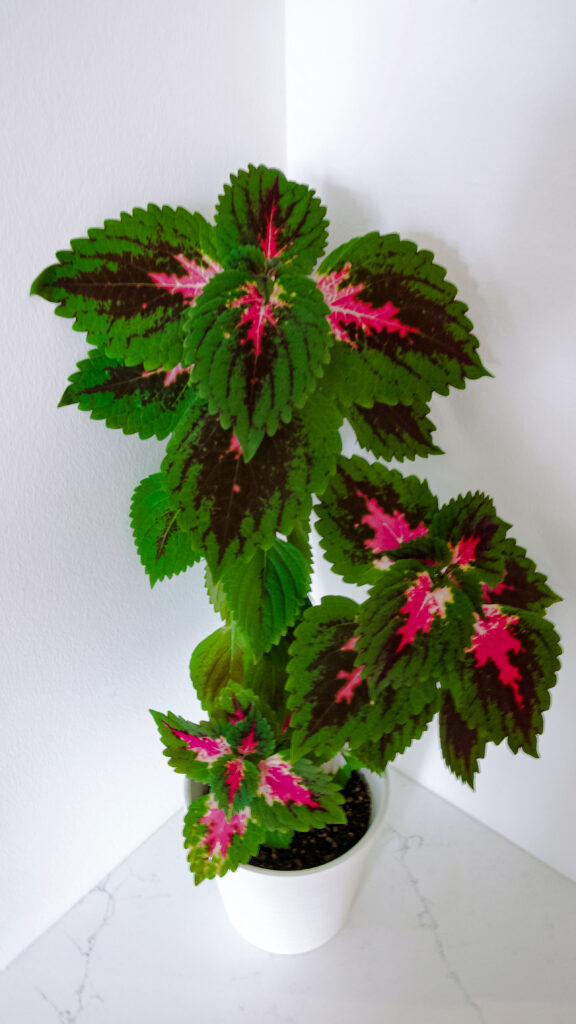
☀️ Light Needs for Coleus
Coleus like bright light. If you ever wonder if your Coleus is getting enough light, look at its foliage. When the foliage is bright and full like the above image, it is likely getting enough light. If the leaves are lacklustre and are dropping, the plant likely needs more sunlight.
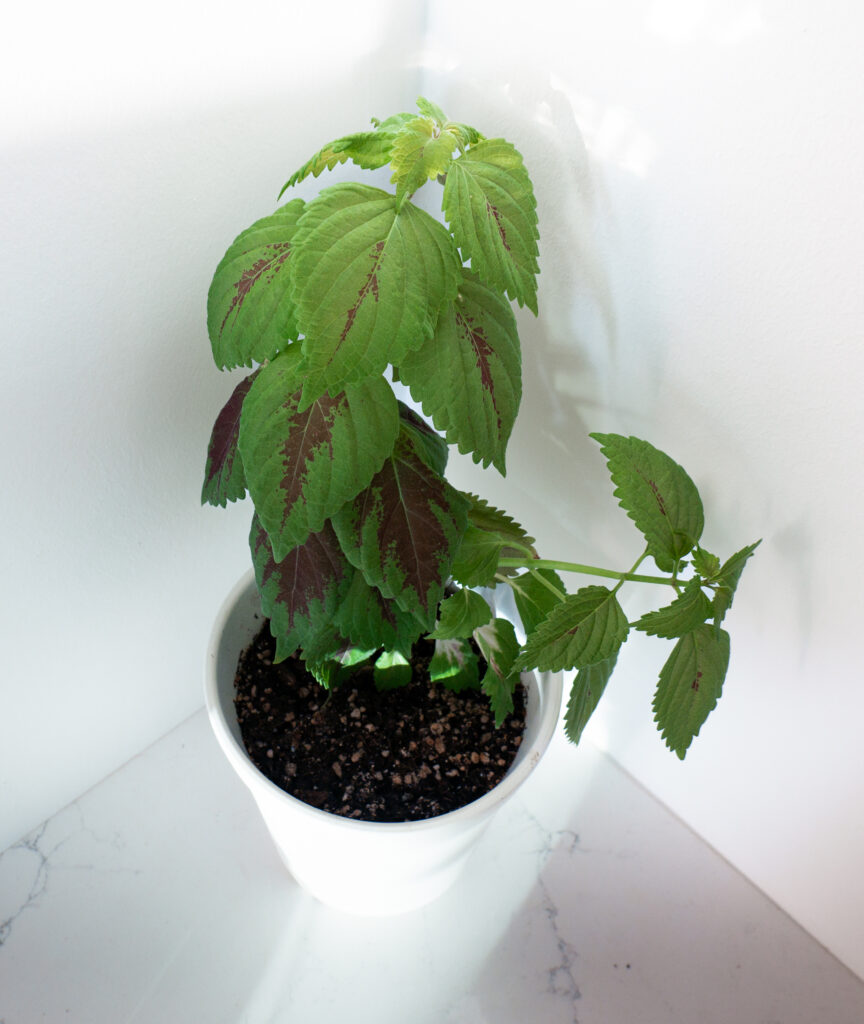
🌡️ Temperature and Humidity Preferences for Coleus 🌫️
Coleus like temperatures between 16-24 degrees celsius, and high humidity.
When thinking about humidity, you can think about where the plant is native to and where it grows. Is it in a rainforest with high humidity? If yes, you will likely need a humidifier, and to set it somewhere between 40 and 60 humidity. I use two Levoit humidifiers on opposite sides of my apartment: the Levoit Hybrid Ultrasonic Humidifier (LV600HH) and Levoit Bedroom Humidifier. This allows me to set my preferred humidity level, and read the display so I know how humid my apartment is at all times. A moisture meter is also helpful for this.
🌱 Growth of Coleus
Coleus can grow up to 2ft tall. If you remove leaves on your Coleus, you can end up with what appear like branches on the plant, where a new stem starts and leaves start to grow. You can see an example of this below.
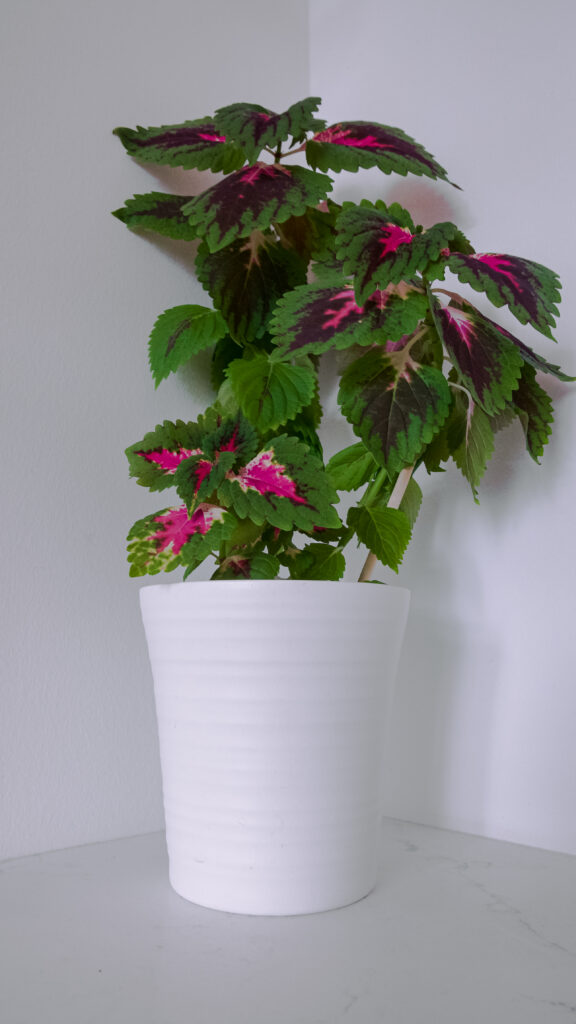
🌸 Blooming
If you want your Coleus to keep growing, CUT OFF THE BLOOMS. I made the choice to watch my plant bloom to study the plant/I have never had a plant flower before and wanted to see what it was like. I figured I could cut off the flower after and then it would grow again. My backup backup plan was to propagate one of the stems into a fresh plant (I’ve now had to do this).
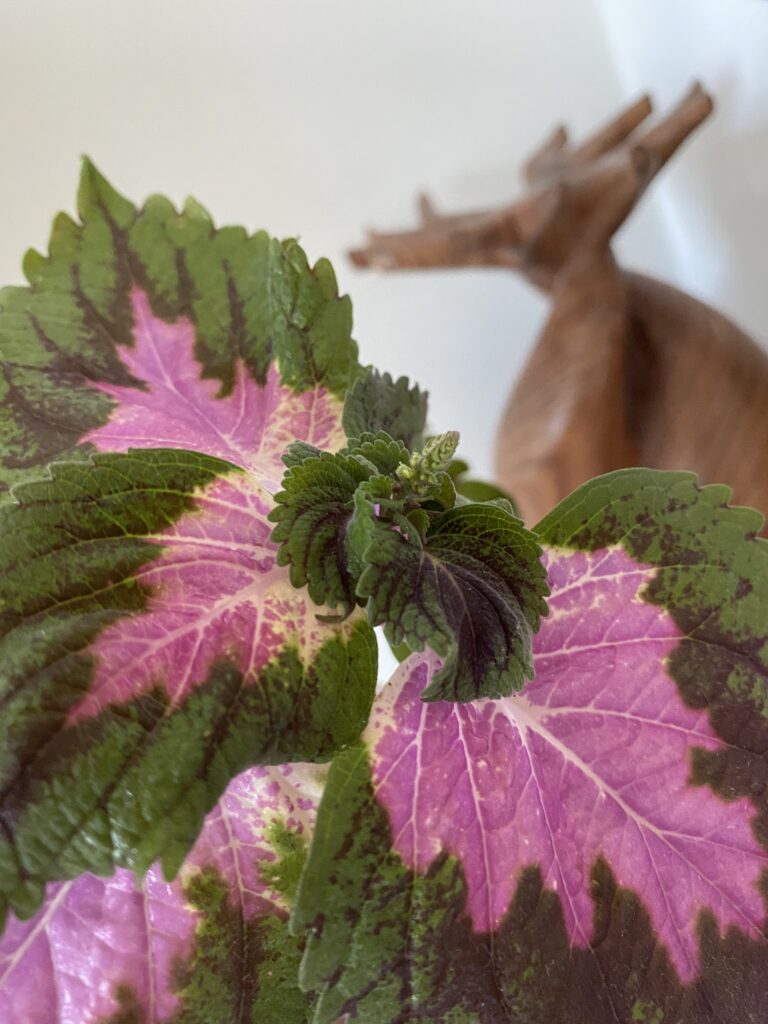
This plant is an annual. As the plant flowers, it determines this is the end of its growing season. It pushes its energy into the flowers before going to seed.
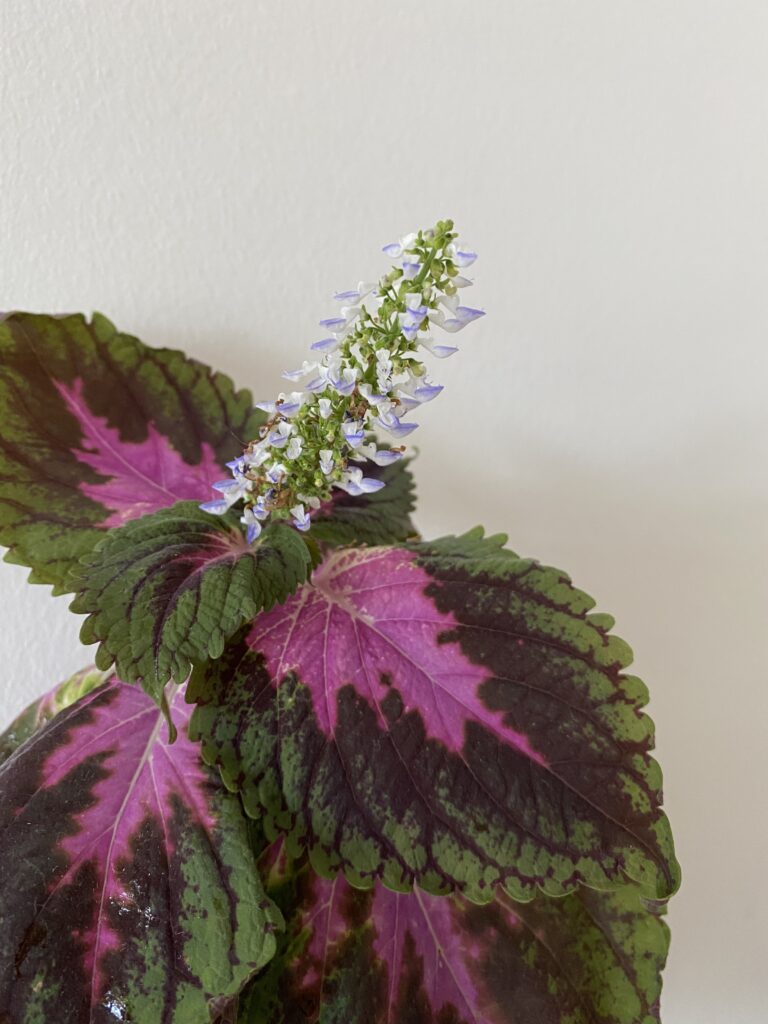
To continue with my experiment, I intended to let the original part of the plant continue with its bloom to observe what will happen when it goes to seed. I monitored this for about a month and then decided to just get rid of the part of the plant.
✂️ Propagating Coleus
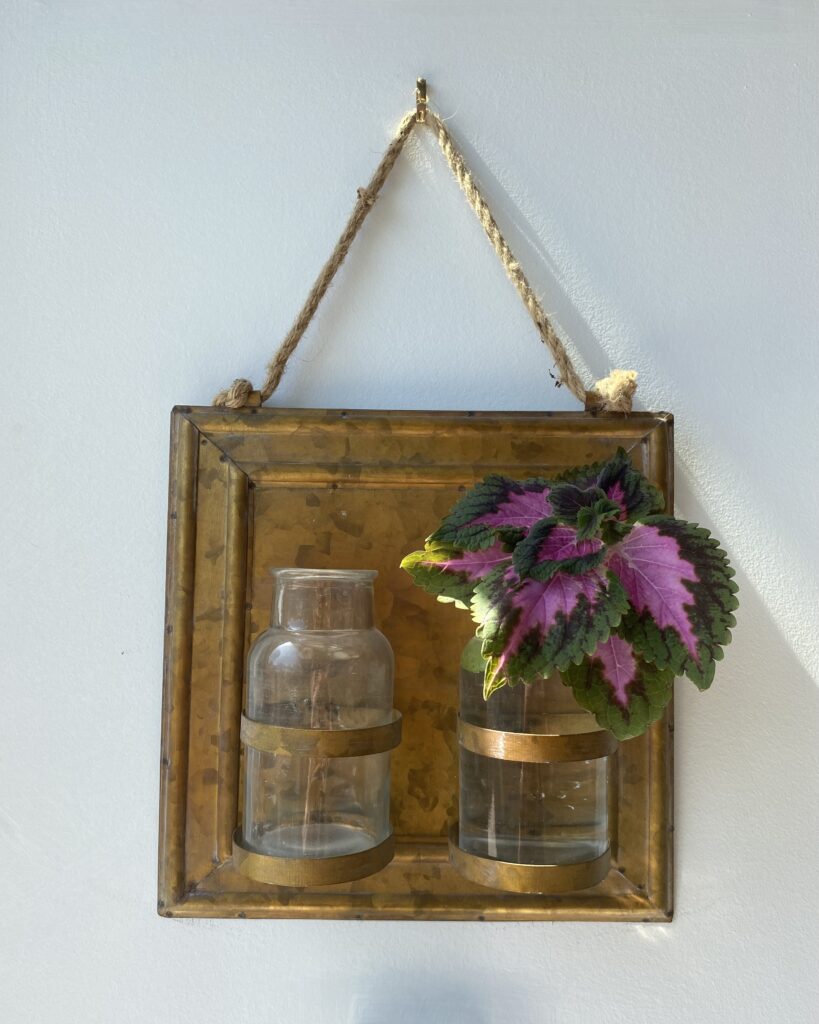
- Water propagation: take a cutting from a healthy plant and place it in water. If the water starts to get murky, you will want to change out the water and put the plant back in. Otherwise it will potentially rot the stem and the plant won’t root. I like water propagation because I can see when the roots start to form in a clear glass container. When the roots are stable enough, I then plant it in soil.
- Soil propagation: with soil propagation, you can take a cutting and put it directly in soil. You can also use rooting hormone on the cutting before putting it in the soil if you prefer. I don’t do this though. You won’t be able to see if the plant is rooting in the soil, but if the plant eventually dies, you know it didn’t root successfully. With soil propagation, you don’t have to worry about transplant shock.
💧 Watering Coleus
Coleus likes to have evenly moist soil, and it never likes for its soil to dry out.
I typically like to bottom water plants through the drainage holes of the pot on a tray of water. It’s the easiest way to know if your plant is thirsty or not. Overwatering can lead to fungus gnats, root rot, or the death of your plant.
You can top water, but it’s best to do so in a pot with drainage until water is flowing out of the hole. If your pot doesn’t have drainage, you might accidentally drown your plant or make some fungus gnats very happy.
You should top water from time to time to make sure any built up minerals can wash through the plant. The water should drip out of the bottom of your drainage hole. I do top water every now and then for this reason, but probably only 20% of the time.
🪴 Repotting Coleus
Signs your plant needs to be repotted include:
- Roots growing out of the drainage holes
- Its been 1.5 to 2 years and it could use a soil refresh
- It looks a lot bigger than its current pot
For help repotting, watch my repotting guide specific to this plant below.
🪳 Pests & Problems 😔
- Spider Mites: If you see webbing or or signs of damage on my leaves, spider mites may have taken to your plant. I spray the plant with a mixture of neem oil, soap and water. I repeat this about once or twice a week (depending on the severity of infestation) for about a month. It’s also good to do this preventatively once a month or so. Learn how to eradicate Spider Mites.
- Drooping Leaves: Your plant is likely thirsty. Just give it a little water and it should be as good as new.
- Yellowing Leaves: If you have a new leaf coming in, your plant is likely fine. Plants pull energy from older leaves to support new growth. But it can also indicate over- or under- watering
- Mealy Bugs: these look like little white cotton balls on the plant. You can remove these with your fingers if you catch them early enough, but I would use a cotton swab with a drop of Isopropyl alcohol and try to scrape them off the stem.
- Fungus gnats: spray with the neem oil, soap, and water. I also let the soil dry out and add dryer sheets on top of the soil so the gnats can’t sense the moisture on the soil.
- Blooming: this plant will put its energy into the bloom and eventually go to seed. If you want to keep your original plant alive, remove the blooms as soon as you see them.
Hope you enjoyed this Coleus indoor plant care guide! Check out the posts below for more indoor plant care guides.

